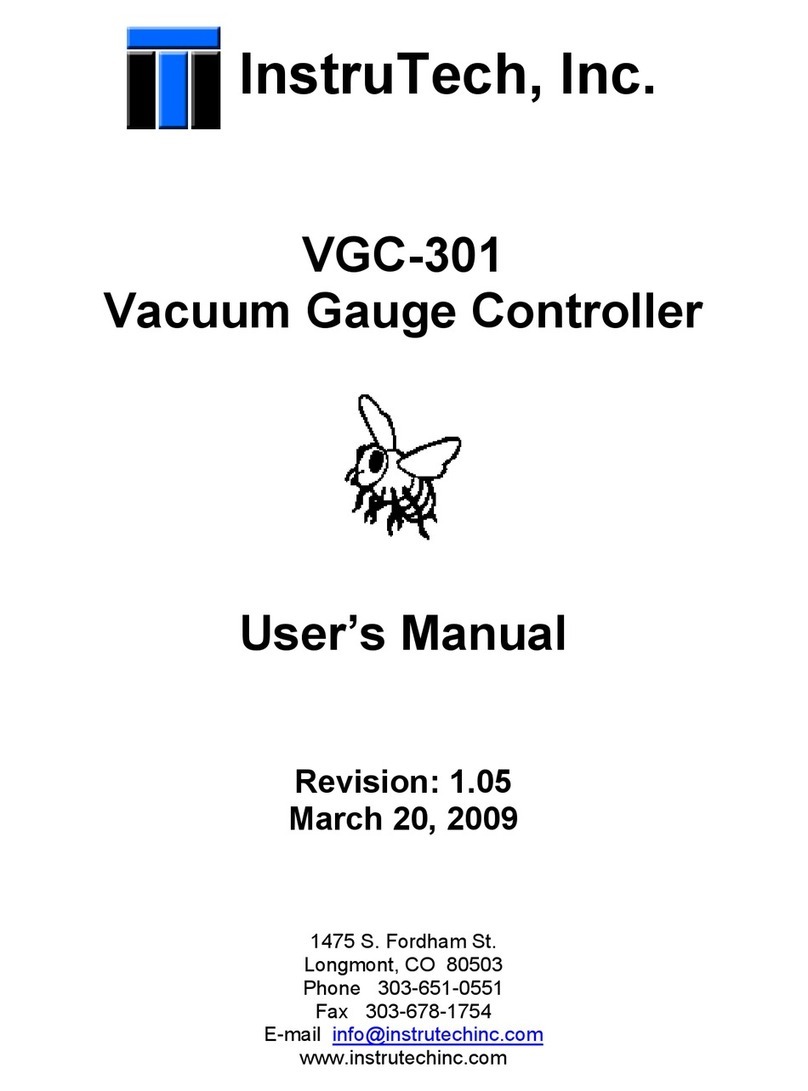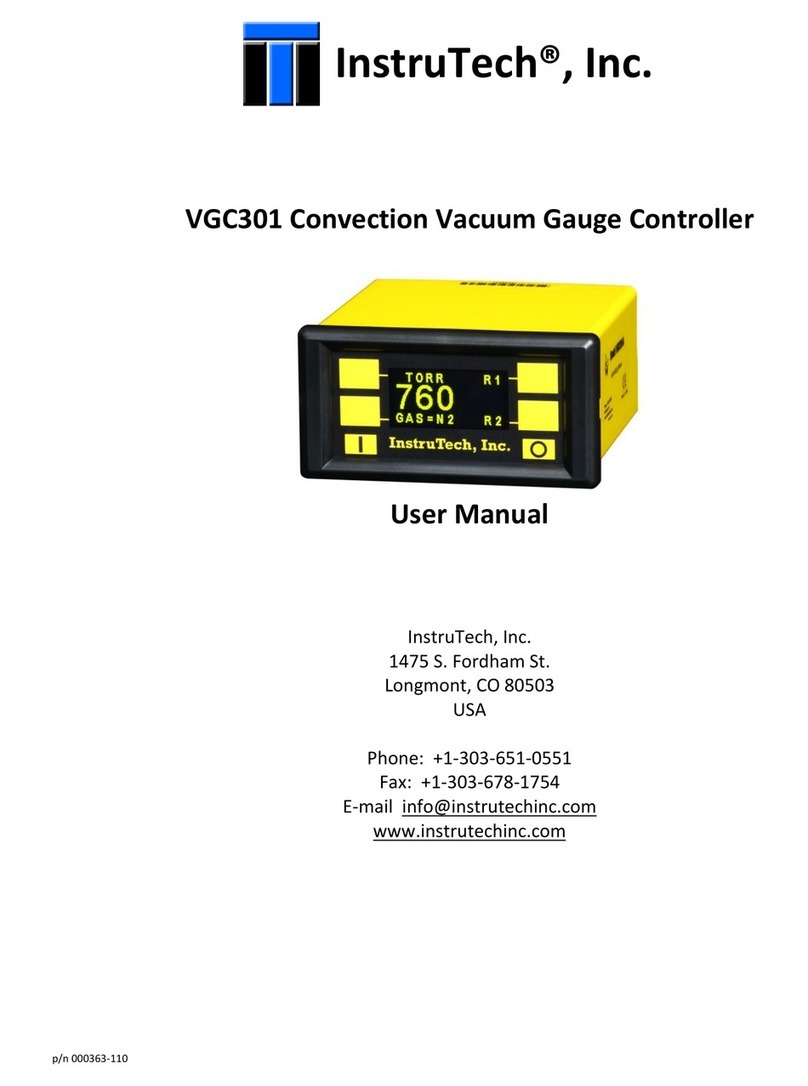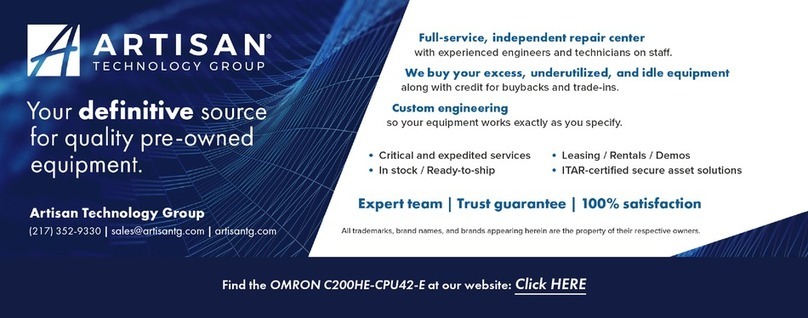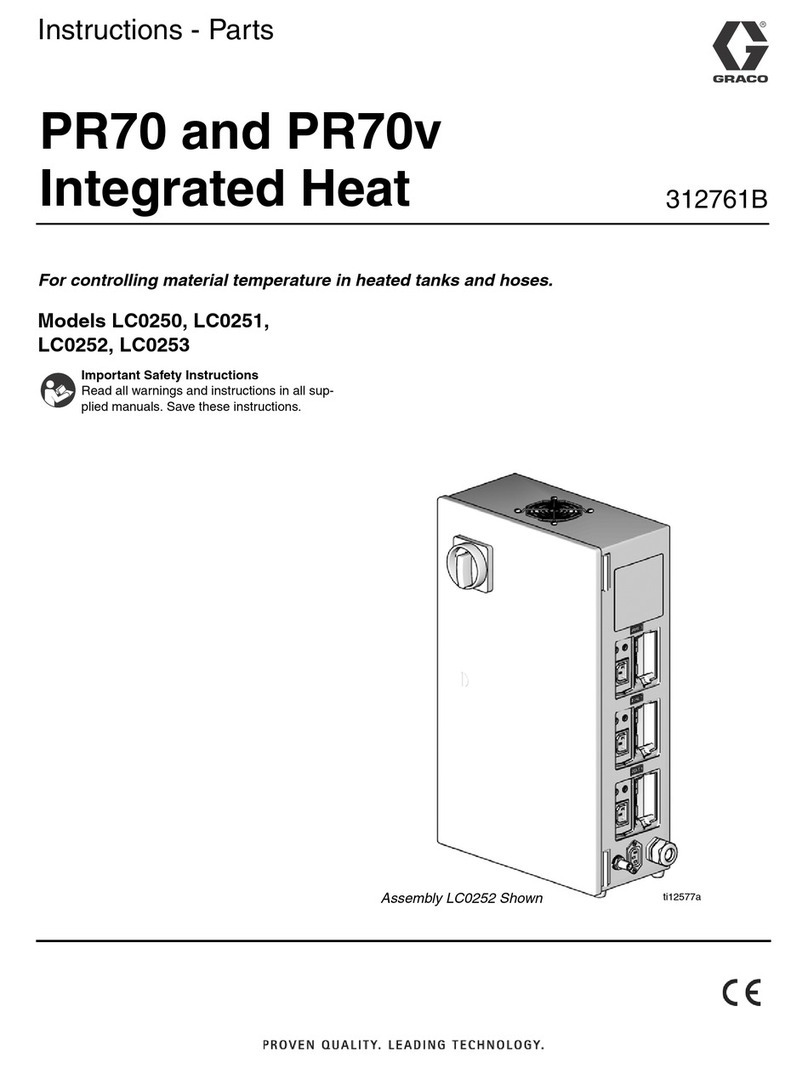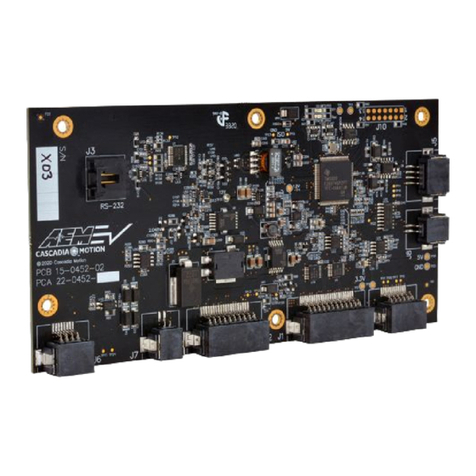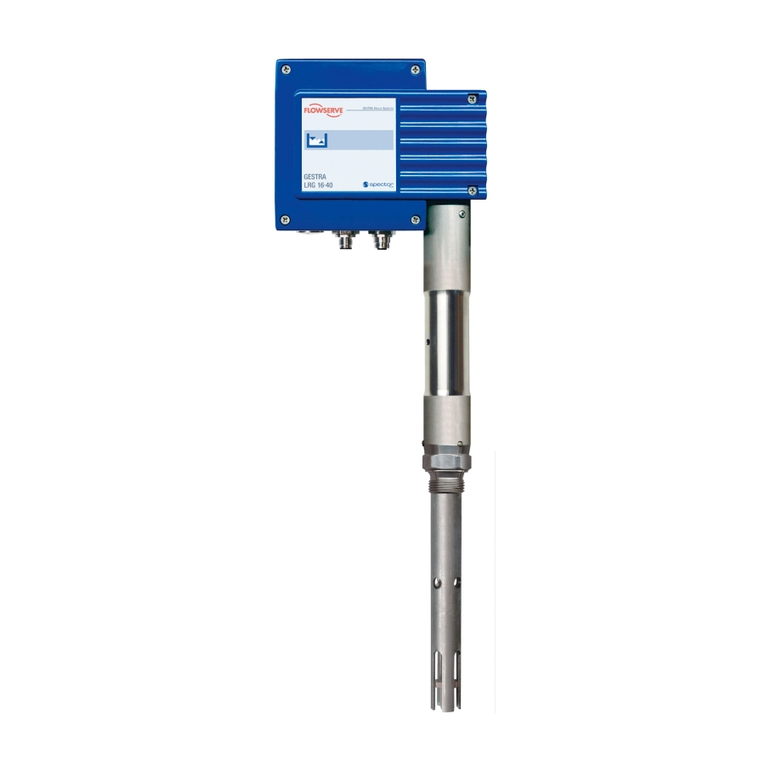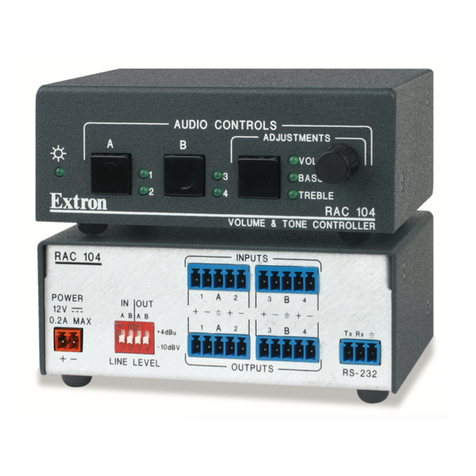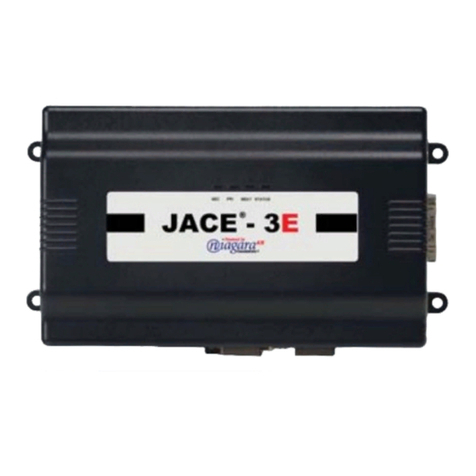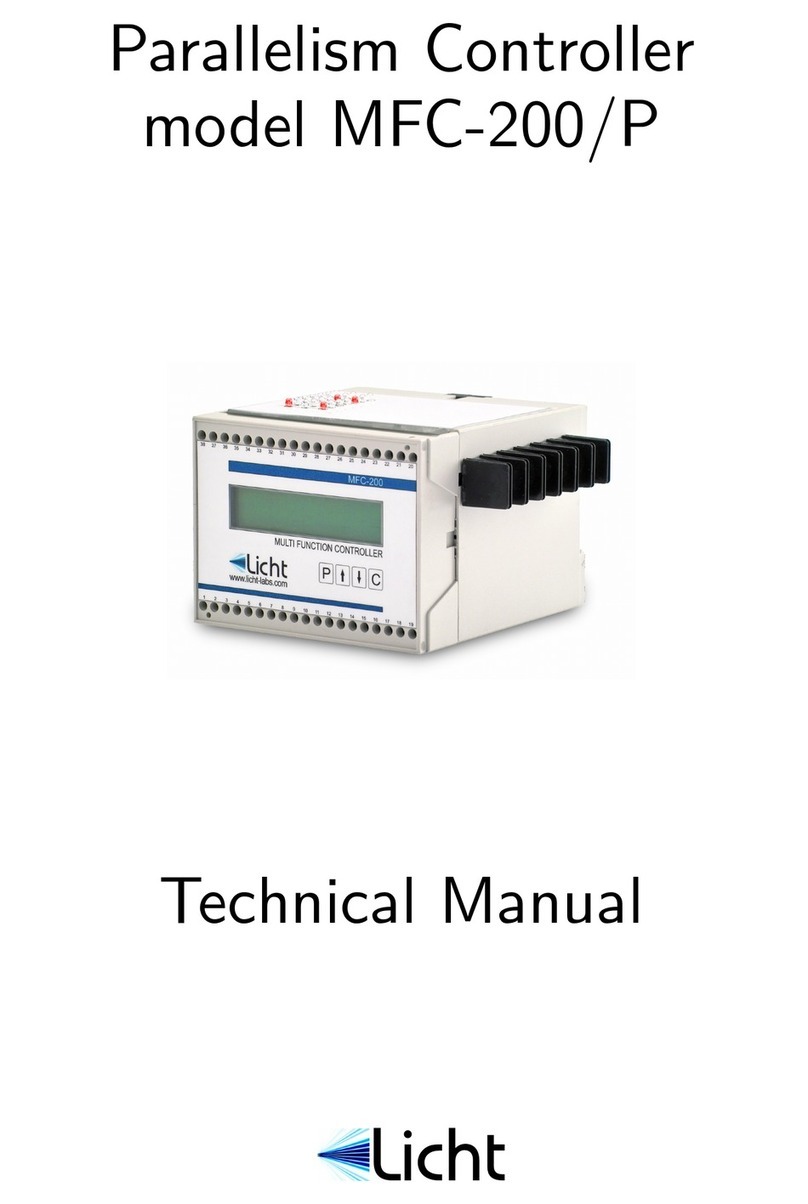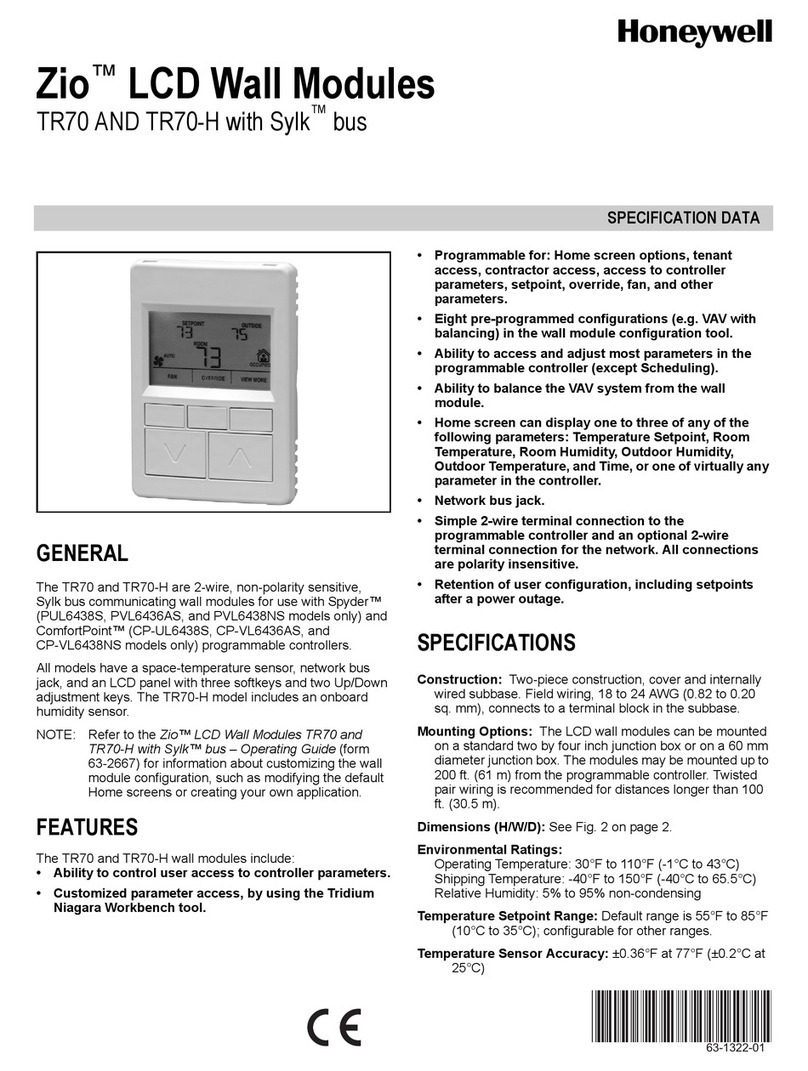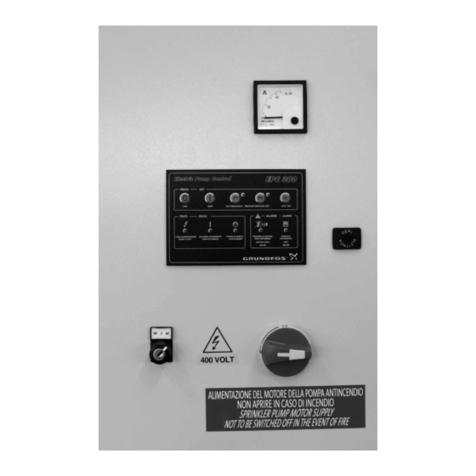Instrutech VGC301A User manual

p/n 000363-106
Copyright © 2011 by InstruTech, Inc.
All rights reserved. No part of this work may be reproduced or transmitted in any form or by any means, electronic or mechanical,
including photocopying and recording, or by any information storage or retrieval system, except as may be expressly permitted in
writing by InstruTech, Inc.
Printed in the United States of America
Convectron®and Granville-Phillips®are registered trademarks of Brooks Automation, Inc. Chelmsford, MA

Instruction Manual VGC301A Controller
InstruTech, Inc. Page 1
Table of Contents
1 Introduction / General Information......................................................................................................3
1.1 Description ....................................................................................................................................3
1.2 Specifications ................................................................................................................................3
1.3 Dimensions....................................................................................................................................4
1.4 VGC301 Part number ....................................................................................................................4
1.5 Options & Accessories...................................................................................................................4
2 Important Safety Information...............................................................................................................5
2.1 Safety Precautions –General........................................................................................................5
2.2 Safety Precautions –VGC301A service and operation .................................................................6
2.3 Electrical Conditions......................................................................................................................6
2.3.1 Proper Equipment Grounding ...............................................................................................6
2.4 Overpressure.................................................................................................................................7
2.5 Gases other than Nitrogen / air ....................................................................................................8
3 Installation.............................................................................................................................................9
3.1 Mechanical Installation .................................................................................................................9
3.2 Electrical Installation.................................................................................................................. 10
3.2.1 Grounding ........................................................................................................................... 10
3.2.2 Electrical Connections......................................................................................................... 10
4 Setup and Operation.......................................................................................................................... 12
4.1 User Interface Basics.................................................................................................................. 12
4.2 Programming.............................................................................................................................. 12
4.3 Return to Factory Default Settings ............................................................................................ 14
4.4 VGC301 User Interface Map ...................................................................................................... 15
5 Using the gauge with different gases ................................................................................................ 17

Instruction Manual VGC301A Controller
InstruTech, Inc. Page 2
6 Display ................................................................................................................................................ 19
6.1 Display - Torr / mTorr................................................................................................................. 19
6.2 Display - mbar ............................................................................................................................ 20
7 Analog Output.................................................................................................................................... 21
7.1 Non-Linear Analog Output - Torr / mTorr.................................................................................. 22
7.2 Non-Linear Analog Output - mbar ............................................................................................. 23
7.3 Log-Linear Analog Output - Torr ................................................................................................ 24
7.4 Log-Linear Analog Output - mbar .............................................................................................. 26
8 RS485/RS232 serial communications ................................................................................................ 28
8.1 Device Specific Serial Communication Info................................................................................ 28
8.2 RS485/RS232 Command Protocol Summary ............................................................................. 29
9 Service ................................................................................................................................................ 30
9.1 Calibration.................................................................................................................................. 30
9.2 Maintenance .............................................................................................................................. 30
9.3 Troubleshooting ......................................................................................................................... 30
10 Factory Service and Support.......................................................................................................... 31
11 Warranty........................................................................................................................................ 31

Instruction Manual VGC301A Controller
InstruTech, Inc. Page 3
1 Introduction / General Information
1.1 Description
The VGC301 vacuum gauge controller is a convenient and inexpensive power supply and readout instrument for
the InstruTech CVG101 Worker Bee™convection-enhanced Pirani vacuum gauge or a Granville-Phillips®275
Convectron®gauge. The 1/8-DIN housing can be used as a bench top, or mounted in a cutout in an instrument
panel. The VGC301 is powered by 12-30 VDC, or by its self-contained universal 100-240VAC supply.
Thermal conductivity gauges measure pressure indirectly by sensing the loss of heat from a sensor to the
surrounding gases. The higher the pressure of the surrounding gas, the more heat is conducted away from the
sensor. Pirani thermal conductivity gauges maintain a sensor (usually a wire) at some constant temperature,
and measure the current or power required to maintain that temperature. A standard Pirani gauge has a useful
measuring range of about 10-4 Torr to 10 Torr. By taking advantage of convection currents that are generated
above 1 Torr, convection-enhanced Pirani gauges increase the measuring range to just above atmosphere.
The VGC301 signals and relay functions are the same as found on similar convection gauge controllers from
other manufacturers. The VGC301 Controller, CVG101 vacuum gauge tube and gauge cable can be directly
interchanged with Brooks Automation, Inc. / Granville-Phillips®375 controller, 275 Convectron®gauge and gauge
cable. (Remote interface, relay and power connectors are different.)
1.2 Specifications
measurement range (signal)
1.0 x 10-4 to 1000 Torr / 1.3 x 10-4 to 1333 mbar / 1.3 x 10-2 Pa to 133 kPa
display
LCD, 4 digits, user-selectable Torr, mbar, or Pa,
(4 digits from 1100 Torr to 1000 Torr), (3 digits from 999 Torr to 10.0 mTorr),
(2 digits from 9.9 mTorr to 1.0 mTorr ), (1 digit from 0.9 mTorr to 0.1 mTorr)
display engineering units
Torr, mbar, or Pa - user selectable
display update rate
0.5 sec
weight
9 oz (250 g)
operating temperature
0 to +40 oC
storage temperature
-40 to +70 oC
humidity
0 to 95% Relative Humidity, non-condensing
altitude operating
6,560 ft (2,000 m) max
storage
41,000 ft (12,500 m) max
analog output (user-selectable)
a) non-linear S-curve 0.375 to 5.659 Vdc, or
b) linear 0 to 10 Vdc - user scalable, or
c) log-linear 1 to 8 Vdc, 1V/decade
serial communications
RS232 and 2 wire/4 wire RS485 - ASCII protocol
housing
1/8-DIN panel-mount enclosure
input power
100-240 Vac, 50/60Hz, universal power supply or 12-30 Vdc, 2 W
setpoint relays
two single-pole double-throw relays (SPDT), 1A at 30 Vdc resistive, or ac non-inductive
connectors
gauge: 9-pin D-sub female
analog output and digital interface: 9-pin D-sub male
relay outputs: 6-pin pluggable terminal block
power: universal AC and 2-pin pluggable terminal block DC
RF/EMI protection
CE compliant

Instruction Manual VGC301A Controller
InstruTech, Inc. Page 4
1.3 Dimensions
1.4 VGC301 Part number
Description Part Number
Panel / Bench mount convection vacuum gauge controller
VGC301A
1.5 Options & Accessories
Gauge Cable - Connects VGC301 controller to InstruTech CVG101 Worker Bee or Brooks Automation, Inc.
/ Granville-Phillips®275 Convectron®gauge.
10 ft (3m)
CB 421-1- 10F
25 ft (6m)
CB 421-1- 25F
50 ft (15m)
CB 421-1- 50F
custom lengths over 50 ft (15m), up to 100 ft ( 30 m)
CB 421-1 - xxxF
Connector Kit - One set of mating connectors is included with the VGC301:
one AC power cord, one 6-pin pluggable terminal strip connector, and one 2-pin
pluggable terminal strip connector.
(Does not include gauge cable connector - part of cable above.)

Instruction Manual VGC301A Controller
InstruTech, Inc. Page 5
2 Important Safety Information
InstruTech has designed and tested this product to provide safe and reliable service, provided it is installed and
operated within the strict safety guidelines provided in this manual.Please read and follow all warnings and
instructions.
To avoid serious injury or death, follow the safety information in this document. Failure to comply with these
safety procedures could result in serious bodily harm, including death, and or property damage.
Failure to comply with these warnings violates the safety standards of installation and intended use of this
instrument. InstruTech, Inc. disclaims all liability for the customer’s failure to comply with these instructions.
Although every attempt has been made to consider most possible installations, InstruTech cannot anticipate
every contingency that arises from various installations, operation, or maintenance of the controller. If you have
any questions about the safe installation and use of this product, please contact InstruTech.
2.1 Safety Precautions –General
Hazardous voltages are present with this product during normal operation. The product should never be
operated with the enclosure removed unless equivalent protection of the operator from accidental contact with
hazardous internal voltages is provided.
WARNING! There are no operator serviceable parts or adjustments inside the product enclosure. Refer
servicing to service trained personnel.
Do not modify this product or substitute any parts without authorization of qualified InstruTech service trained
personnel. Return the product to an InstruTech qualified service and repair center to ensure that all safety
features are maintained. Do not use this product if unauthorized modifications have been made.
WARNING! Source power must be removed from the product prior to performing any servicing.
After servicing this product, ensure that all safety checks are made by a qualified service person. When
replacement parts are required, ensure that the parts are specified by InstruTech, Inc. Substitutions of non-
qualified parts may result in fire, electric shock or other hazards. Use of unauthorized parts or modifications
made to this product will void the warranty.
To reduce the risk of fire or electric shock, do not expose this product to rain or moisture. These products are
not waterproof and careful attention must be paid to not spill any type of liquid onto these products. Do not
use these products if they have been damaged. Immediately contact InstruTech, Inc. to arrange return of the
product if it is damaged.
WARNING
WARNING
WARNING

Instruction Manual VGC301A Controller
InstruTech, Inc. Page 6
Due to the possibility of corrosion when used in certain environmental conditions, it is possible that the
product’s safety could be compromised over time. It is important that the product be periodically inspected for
sound electrical connections and equipment grounding. Do not use if the equipment grounding or electrical
insulation has been compromised.
2.2 Safety Precautions –VGC301A service and operation
Ensure the enclosure of the VGC301 is connected directly to a good quality earth ground.
Ensure that the vacuum port on which the CVG101 vacuum gauge tube is mounted is electrically grounded.
Use an appropriate power source of 100-240 Vac, 50/60Hz or 12 to 30 Vdc, 2W.
Turn off power to the unit before attempting to service the controller.
Turn off power to the unit if a cable or plug is damaged or the product is not operating normally according to
this instruction manual. Contact qualified InstruTech service personnel for any service or troubleshooting
condition that may not be covered by this instruction manual.
It is important that the product be periodically inspected for sound electrical connections and equipment
grounding. Do not use if the equipment grounding or electrical insulation has been compromised.
Do not use if the unit has been dropped or the enclosure has been damaged. Contact InstruTech for return
authorization and instructions for returning the product to InstruTech for evaluation.
2.3 Electrical Conditions
WARNING! When high voltage is present in any vacuum system, a life threatening electrical shock
hazard may exist unless all exposed electrical conductors are maintained at earth ground potential. This applies
to all products that come in contact with the gas contained in vacuum chambers. An electrical discharge within
a gaseous environment may couple dangerous high voltage directly to any ungrounded conductor of electricity.
A person could be seriously injured or killed by coming in contact with an exposed, ungrounded electrical
conductor at high voltage potential. This condition applies to all products that may come in contact with the gas
inside the vacuum chamber (vacuum/pressure containment vessel).
2.3.1 Proper Equipment Grounding
WARNING! Hazardous voltages that could seriously injure or cause death are present in many vacuum
processes. Verify that the vacuum port on which the CVG101 vacuum gauge tube is mounted is electrically
grounded. Consult a qualified Electrician if you are in doubt about your equipment grounding. Proper
grounding of your equipment is essential for safety as well as intended operation of the equipment. The

Instruction Manual VGC301A Controller
InstruTech, Inc. Page 7
CVG101 vacuum gauge tube and enclosure of the VGC301 controller must be connected directly to a good
quality earth ground. Use a ground lug on the CVG101 gauge vacuum connection / flange if necessary.
WARNING! In order to protect personnel from electric shock and bodily harm, shield all conductors which
are subject to potential high voltage electrical discharges in or around the vacuum system.
It is the user’s responsibility to ensure that the electrical signals from this product and any connections made to
external devices, for example, relays and solenoids, are used in a safe manner. Always double check the system
set-up before using any signals to automate your process. Perform a hazardous operation analysis of your
system design and ensure safeguards and personnel safety measures are taken to prevent injury and property
damage
2.4 Overpressure
WARNING! Install suitable protective devices that will limit the level of pressure inside your vacuum
chamber to less than what the vacuum chamber system components are capable of withstanding. InstruTech
gauges should not be used at pressures exceeding 1000 Torr absolute pressure.
In cases where an equipment failure could cause a hazardous condition, always implement fail-safe system
operation. For example, use a pressure relief device in an automatic backfill operation where a malfunction
could result in high internal pressures if the pressure relief device was not installed on the chamber.
The CVG101 vacuum gauge tube connected to the VGC301A controller is not intended for use at pressures
above 20 psia (1000 torr); DO NOT exceed 35 psig (< 2 ½ bars) pressure inside the sensor. If your chamber goes
to higher pressures, you should install an isolation valve or pressure relief device to protect the gauge tube from
overpressure conditions. With some fittings, actual safe overpressure conditions may be lower; for example, a
quick-connect, O-ring compression fitting may forcibly release the gauge tube from the vacuum chamber fitting
with only a few psi over local uncorrected barometric (atmospheric) pressure.
CAUTION! If the internal pressure of a vacuum gauge device is allowed to increase above local
uncorrected barometric pressure (atmospheric pressure side), vacuum fittings may release and possible
overpressure conditions may cause leaks that would allow the gas inside the gauge tube to release into the
atmosphere of the surrounding environment. Toxic, pyrophoric and flammable gases are examples of
hazardous gases that if allowed to leak out of the vacuum/pressure containment vessel into the atmospheric
environment, could cause bodily injury and possible damage to equipment. Never expose the gauge tube
internal volume to pressure above local atmospheric pressure when using hazardous gases.

Instruction Manual VGC301A Controller
InstruTech, Inc. Page 8
2.5 Gases other than Nitrogen / air
WARNING! Do not attempt to use with gases other than nitrogen (N2) or air without referring to correction
factor data tables.
InstruTech gauges and modules are calibrated for direct readout of nitrogen or air. Do not attempt to use with
other gases such as argon (Ar) or carbon dioxide (CO2) unless accurate conversion data for N2 to other gas is
properly used. Refer to sections titled “Using the gauge with different gases”, “Display” and “Analog Output” for
a more complete discussion.
WARNING! Do not use the convection gauge connected to this device in an explosive atmosphere or in the
presence of flammable gases, vapors or fumes. Do not use this device to measure the pressure of explosive or
combustible gases or gas mixtures. The sensor wire in the gauge normally operates at 125 oC, but if malfunction
should occur, the wire temperature could exceed the ignition temperature of certain combustible gases and gas
mixture. This could cause an explosion which could result in serious injury or death.

Instruction Manual VGC301A Controller
InstruTech, Inc. Page 9
3 Installation
3.1 Mechanical Installation
The VGC301 is designed for use on a bench top, or it may be mounted in an instrument control panel.
To mount the VGC301 in a panel:
1. Make a cutout in your instrument control panel as shown in the drawing above. Be sure to allow clearance
behind the panel for the instrument as well
as connectors and cables at the rear of the
instrument
2. Gently pry the front panel bezel loose
and remove.
3. Slide the VGC301 into the panel hole
cutout.
4. On either side of the VGC301 are two
screw-mounting brackets. When the screws
in the front of the instrument are turned
counterclockwise, the hold-down brackets recess out of the way into the VGC301 housing. When these screws
are turned clockwise, the brackets rotate out 90obehind the panel. Tighten these screws until the brackets hold
the VGC301 in place against the panel.
5. Press the front panel bezel back in place.

Instruction Manual VGC301A Controller
InstruTech, Inc. Page 10
3.2 Electrical Installation
3.2.1 Grounding
Be sure the vacuum gauge and your vacuum system are properly grounded to protect personnel from shock
and injury. Be aware that some vacuum fittings, especially those with O-rings, may not produce a good
electrical connection between the gauge and the chamber it is connected to.
3.2.2 Electrical Connections
A good recommended practice is to remove power from any cable prior to connecting or disconnecting it.
The InstruTech VGC301 may replace similar controllers from other manufacturers, such as the Granville-Phillips®
375 controller. Many of these other controllers employ the same 9-pin and 15-pin D connectors, but they do not
all use the same signal / pinout configurations. If you wish to use your existing cables, be sure to check
compatibility with the tables on the next page. Rewire your cables as necessary.
AC Power Input
Universal AC power cord input plug. The VGC301 accepts AC power from 100 to 240 VAC, 50/60Hz. The
VGC301 includes a power cord with North America 115 VAC plug on the other end. Plug adapters or power/cord
sets should be readily available for various other AC mains connections in other countries.
DC Power Input
2-pin pluggable terminal strip (Mating connector: Phoenix p/n 1803578 or InstruTech p/n 000327).
pin number
pin description
1
+12 to +30 V
2
ground
Note: The VGC301 will operate from either AC or DC power. It is not necessary to supply both.
16
1 2

Instruction Manual VGC301A Controller
InstruTech, Inc. Page 11
Remote I/O & Interface Connector
9-pin D-sub female. (Mating connector: InstruTech p/n 000263 + 000264)
pin number
pin description –4 Wire RS485
pin description –2 Wire RS485
1
RS485 RDA (- ) Input
RS485 DATA A (-) Input/output
2
RS485 RDB (+) Input
RS485 DATA B (+) Input/output
3
RS485 TDA (- ) Output
4
RS485 TDB (+) Output
5
RS232 TX
RS232 TX
6
RS232 RX
RS232 RX
7
analog signal output
(non-linear, linear, or log-linear)
analog signal output
(non-linear, linear, or log-linear)
8
signal ground
signal ground
9
relay disable(1)
relay disable(1)
1. The relays are disabled by applying a continuous ground to pin # 9. This will prevent any switching of the
relay contactors during operation of the VGC301.
Relay Connector
6-pin pluggable terminal strip (Mating connector: Phoenix p/n1803617 or InstruTech p/n 000347)
pin number
pin description
1
relay 1 common
2
relay 1 NC
3
relay 1 NO
4
relay 2 common
5
relay 2 NC
6
relay 2 NO
Gauge cable assembly
P/N CB 421-1- XXXF is a custom cable assembly provided in different lengths from InstruTech for connecting the
VGC301 controller to InstruTech CVG101 Worker Bee or Brooks Automation, Inc. / Granville-Phillips®275
Convectron®gauge tube. The cable pin to pin connection is shown below.
VGC301 pin number
connects to
CVG101 gauge pin number CVG101 molded plastic connector
P/N CK431-01
1
NC
2
cable shield
3
3
4
NC
5
2
6
5
7
1
8
1
9
NC

Instruction Manual VGC301A Controller
InstruTech, Inc. Page 12
4 Setup and Operation
4.1 User Interface Basics
The user interface is designed for easy operation and a
natural progression of setup parameters. A complete user
interface map is shown in section 4.4. This section gives a
brief explanation of operation for added clarity.
There are four soft-keys located on the front panel, two on
each side of the display. These keys are used to select and
program the various functions available. During programming
of the VGC301, the display will i identify what function each
key represents.
Programming soft-keys
To begin programming, press any one of the four keys. The display will indicate a choice of functions. Press the
key indicated by the function on the display to continue with the programming of the parameter desired. After
setting the various parameters, press the SAVE/EXIT key to save the new setting and return to the main screen.
To continue setting additional parameters, scroll forward with the MORE key until you reach the desired
parameter.
4.2 Programming
SET UNITS
This should be the first parameter that is set. This will be the units-of-measure (Torr, mbar, Pa) that are used for
all other settings. If your VGC301 has been previously configured and relay setpoints and linear analog output
pressure settings have been programmed, changing units-of-measure will return the relays setpoints and the
linear analog output pressure settings to factory default setting values in Torr. In this case, you must reprogram
the relay setpoints and linear analog output pressure settings in the newly programmed units-of-measure.
SET VACUUM
When operating in units of either mbars (mbar) or pascals (Pa), you must perform SET ATM
before setting the vacuum reading (SET VACUUM). See SET ATM below. Failure to do so will result in
improper operation of the gauge. If you change units of measure or reset to factory defaults, then this same
procedure must be followed again if the units of measure are being set to either mbar or Pa.
1. To properly set the vacuum reading (“zero” point), with the CVG101 installed on your vacuum system,
the gauge should be evacuated to a pressure below 1 x 10-4 Torr. [Factory default = 0.0 mTorr]
2. Go to the SET VACUUM screen. When the vacuum system pressure is below 1 X 10-4 Torr, press the
PRESS TO SET VAC key. The zero point (displayed pressure reading with gauge exposed to vacuum) is
now set.
NOTICE

Instruction Manual VGC301A Controller
InstruTech, Inc. Page 13
SET ATM
1. To set the atmospheric pressure reading (also known as the “span” adjustment), flow nitrogen gas into
your closed vacuum chamber to allow the pressure to rise to a known value above 400 Torr.
Alternatively, if your local uncorrected barometric pressure (air) is known, simply vent your vacuum
system chamber to expose the gauge to the local atmospheric pressure.
2. Go to the SET ATM screen. When the desired pressure is stable, adjust the displayed pressure reading
on the VGC301 to the known value using the INCR (increase) or DECR (decrease) keys. Press the
SAVE/EXIT key to save the new atmospheric (span) pressure value.
SET SP1 ON and SET SP2 ON
These setpoints correspond to the turn on points for each relay. The relays will turn on (energize) when the
pressure is below this value. [Factory default = 100 mTorr] If you are unable to increase the values of SP1 ON
or SP2 ON , you must first go to SP1 OFF or SP2 OFF and increase those values to a number higher than the
values of SP1 ON or SP2 ON you are trying to set.
SET SP1 OFF and SET SP2 OFF
These setpoints correspond to the turn off points for each relay. The relays will turn off when the pressure is
above this value. [Factory default = 200 mTorr] If you are unable to decrease the values of SP1 OFF or SP2 OFF,
you must first go to SP1 ON or SP2 ON and decrease those values to a number lower than the values of SP1 OFF
or SP2 OFF you are trying to set.
SET ADDR
This is the lower nibble of the one byte RS485 device address. Assuming the address offset (ADDR OFFSET) is
equal to 0, setting the ADDR to a 5 will make the address be 0x05 in hexadecimal. A 15 will set the ADDR to
0x0F in hexadecimal. Note that the address (ADDR) must be used even when sending RS232 commands.
[Factory default = 1]
ADDR OFFSET
This is the upper nibble of the one byte RS485 address. Assuming the address (ADDR) is 0, setting the address
offset (ADDR OFFSET) to a 5 will make the address be 0x50 hexadecimal. Setting the offset to 15 will make the
address be 0xF0 hexadecimal. [Factory default = 0]
BAUD RATE
This sets the baud rate for the RS485 and the RS232 serial communications. The baud rate can be set to various
values through the serial interface or via the front panel soft-keys. The parity can only be changed through the
serial interface command set. When this occurs, the current setting will be shown in the list of choices and can
be re-selected if changed. [Factory default = 19.2K baud]

Instruction Manual VGC301A Controller
InstruTech, Inc. Page 14
RS485 Type
Selects 2-wire or 4-wire configuration for RS485 interface.
SET ANALOG
Select “NON LINEAR” (for S-Curve), “LOG-LINEAR” or “LINEAR” analog output. (See Analog Output section 7)
SET LINEAR
This will take the user to four different screens to setup the linear analog output.
a) Set the minimum pressure
b) Set the minimum voltage corresponding to the minimum pressure
c) Set the maximum pressure
d) Set the maximum voltage corresponding to the maximum pressure
The linear output voltage can be any value between 10 mV and 10 V corresponding to pressures between
1 mTorr and 1000 Torr. [Factory default is 10 mV to 10 Vdc corresponding to 1 mTorr to 1 Torr]
INFO
This screen shows the InstruTech telephone number for questions and the unit firmware version.
4.3 Return to Factory Default Settings
You can reset all values to the original factory default settings by simultaneously pressing the upper left and
upper right soft-keys. The user will then be prompted to “Set Factory Defaults?” Choose Yes or No.

Instruction Manual VGC301A Controller
InstruTech, Inc. Page 15
4.4 VGC301 User Interface Map

Instruction Manual VGC301A Controller
InstruTech, Inc. Page 16
VGC301 User Interface Map (continued)

Instruction Manual VGC301A Controller
InstruTech, Inc. Page 17
5 Using the gauge with different gases
A thermal conductivity gauge senses heat loss, which depends on the thermal conductivity of the gas surrounding the
sensor. Since different gases, and mixtures, have different thermal conductivities, the indicated pressure readings and
outputs will also be different. InstruTech convection gauges (and most other thermal conductivity gauges) are normally
calibrated using nitrogen (N2). When a gas other than N2/ air is used, correction must be made for the difference in
thermal conductivity between nitrogen (N2) and the gas in use. The charts and tables on the following pages indicate how
different gases affect the display and output from an InstruTech convection gauge.
WARNING! Using a thermal conductivity gauge with gases other than that for which it is calibrated could result in
death or serious injury. Be sure to use gas correction data in this manual when measuring pressures of gases other than
N2 / air.
For N2the calibration shows excellent agreement between indicated and true pressure throughout the range from 10-4 to
1000 Torr. At pressures below 1 Torr, the calibration curves for the different gases are similar. The difference in readings at
these low pressures is a constant, a function of the difference between thermal conductivities of the gases.
At pressures above 1 Torr, indicated pressure readings may diverge significantly. At these higher pressures convection
currents in the gauge become the predominant cause of heat loss from the sensor and calibration depends on gauge tube
geometry and mounting position as well as gas properties.
Generally, air and N2are considered the same with respect to thermal conductivity, but even N2 and air will exhibit slight
differences in readings at higher pressures. For example, when venting a system to atmosphere using N2, you may see
readings change by 30 to 40 Torr after the chamber is opened and air gradually displaces the N2in the gauge. For most
other gases the effect is much more significant and may result in a hazardous condition as described below.
Other considerations when using gases other than N2/ air
Flammable or explosive gases
WARNING! InstruTech convection gauges are not intrinsically safe or explosion proof and are not intended for use in
the presence of flammable or explosive gases or vapors.
Under normal conditions the voltages and currents in InstruTech convection gauges are too low to cause ignition of
flammable gases. However, under certain failure conditions, sufficient energy could be generated to cause flammable
vapors or gases to ignite or explode. Thermal conductivity gauges like the InstruTech convection gauges are not
recommended for use with flammable or explosive gases.
Moisture / water vapor
In some processes (lyophilization, for example) the gas composition may not change significantly, except for moisture
content. Water vapor can significantly change the response of a thermal gauge and correction should be made, as you
would for any other gas.
Other contaminants
If your gases condense, coat, or corrode the sensor, the gauge calibration and response to different gases will change.
Generally, if the gauge can be "calibrated" ("zero" and "span" settings), these changes are small enough to be ignored. If
you can’t set zero and span, the gauge should be replaced or return to factory for evaluation and possible cleaning.

Instruction Manual VGC301A Controller
InstruTech, Inc. Page 18
Convection Vacuum Gauge
Indicated vs. True Total Pressure
Test Gases - N2, Ar, He
0.0001
0.001
0.01
0.1
1
10
100
1000
0.0001 0.001 0.01 0.1 1 10 100 1000
Indicated Pressure (Torr)
(convection gauge)
True Total Pressure (Torr)
(capacitance manometer)
CVG N2 Convectron N2 CVG Ar Convectron Ar Convectron He CVG He
Ar
N2
He
Gas Correction Chart
The Y- Axis is actual pressure as measured by a capacitance manometer, a diaphragm gauge that measures true
total pressure independent of gas composition. The X-Axis is the pressure reading indicated by the convection
gauge under test. The chart above shows readings for an InstruTech convection gauge (CVG) and Granville-
Phillips®Convectron®gauge to illustrate that the response of both these type of gauges is virtually
indistinguishable.
CAUTION ! Do not assume this data applies to other convection gauges which may or may not be the same.
Refer to the table on the next page and note the following examples:
Ex A: If the gas is nitrogen (N2), when the true total pressure is 500 Torr, the gauge will read 500 Torr.
Ex B: If the gas is argon (Ar), when the true pressure is 100 Torr, the gauge will read about 9 Torr.
If you are backfilling your vacuum system with Ar, when your system reaches a pressure of 760 Torr
true pressure your gauge will be reading about 23 Torr. Continuing to backfill your system, attempting to
increase the reading up to 760 Torr, you will over pressurize your chamber which may present a hazard.
Ex C: If the gas is helium (He), the gauge will read 999 Torr when pressure reaches about 10 Torr true pressure
and opening the chamber to atmosphere prematurely may present other hazards for both people and product.
CAUTION! What these examples illustrate is that using gases other than nitrogen (N2) without using accurate gas
conversion data and other proper precautions could result in injury to personal and/or damage to equipment.
Suggested precautions when using gases other than N2:
Install a pressure relief valve or burst disk on your chamber, to protect it from overpressure. Post a warning
label on your gauge readout that states "Do Not Exceed ____ Torr Indicated Pressure" (fill in the blank for
maximum indicated pressure for the gas you use) so that an operator using the gauge will not exceed a safe
pressure.
Table of contents
Other Instrutech Controllers manuals
Popular Controllers manuals by other brands
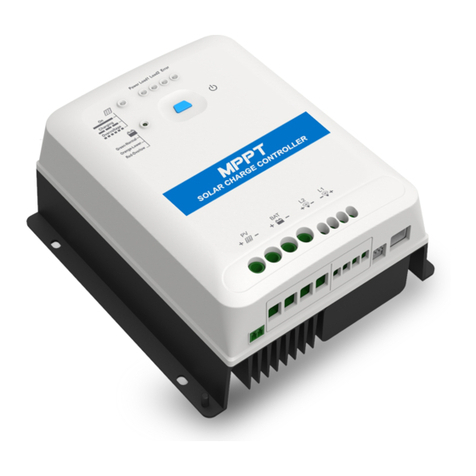
Epever
Epever MPPT user manual
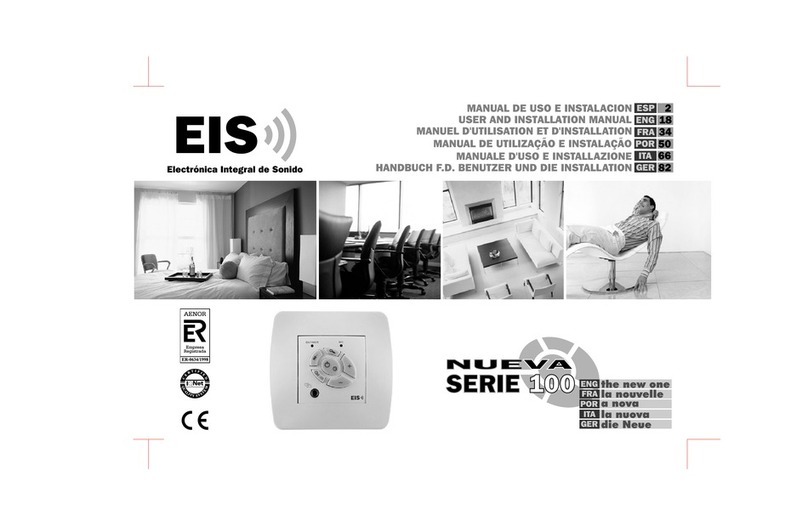
EIS
EIS New 100 Series User and installation manual

Mitsubishi Electric
Mitsubishi Electric FX3U-2HSY-ADP installation manual
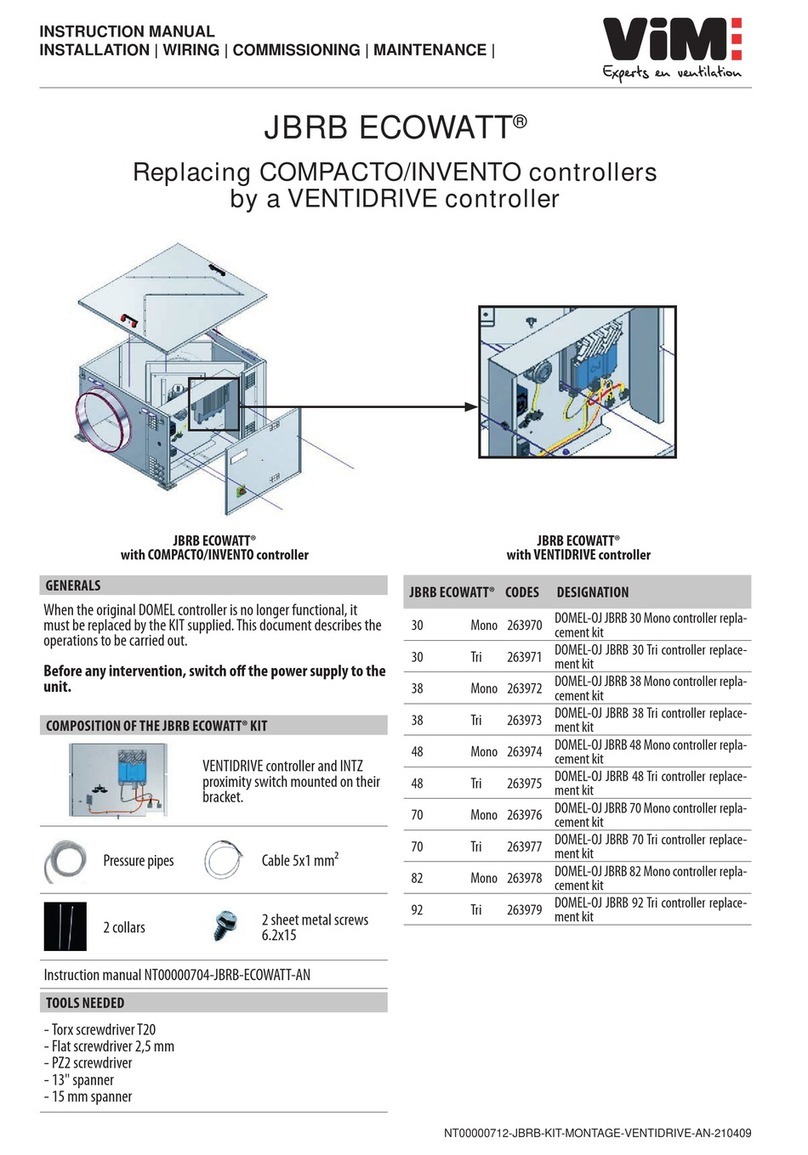
ViM
ViM JBRB ECOWATT instruction manual
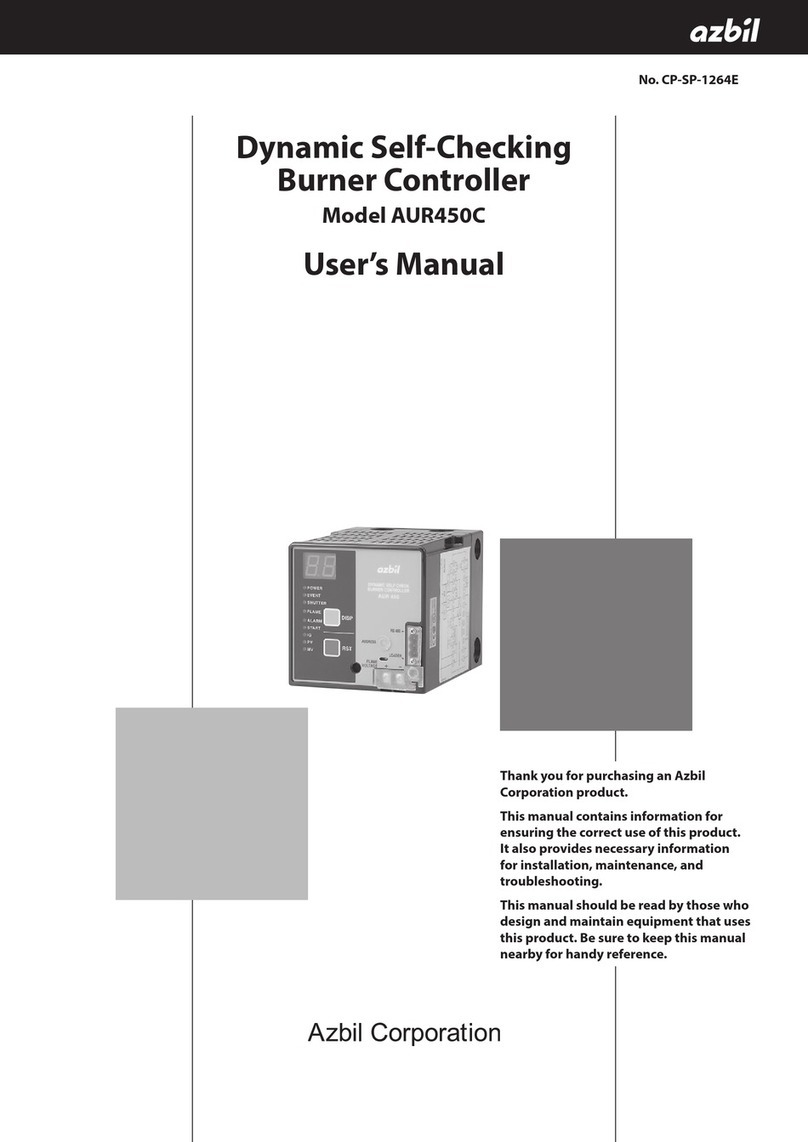
Azbil
Azbil AUR450C user manual
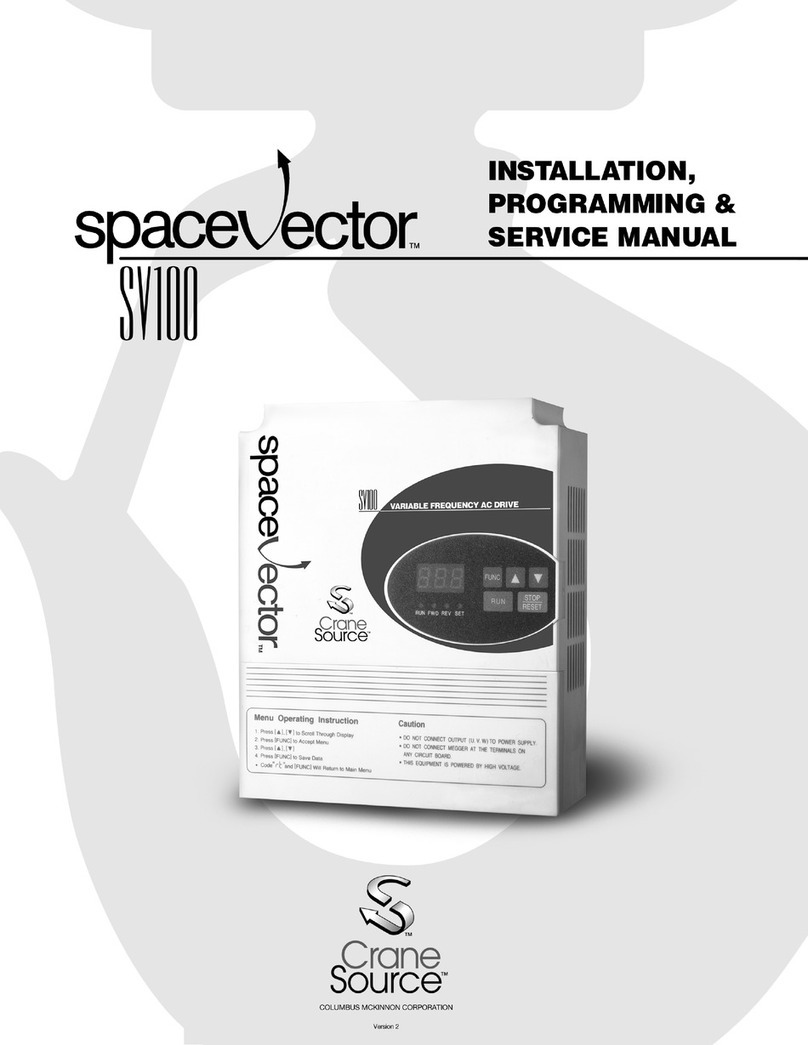
Crane Source
Crane Source Space Vector SV100 Installation, Programming & Service manual

